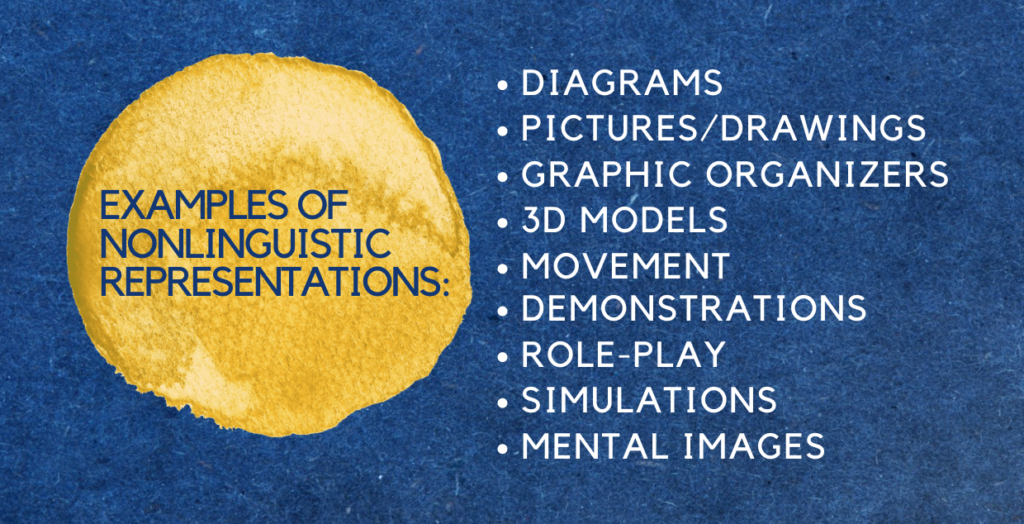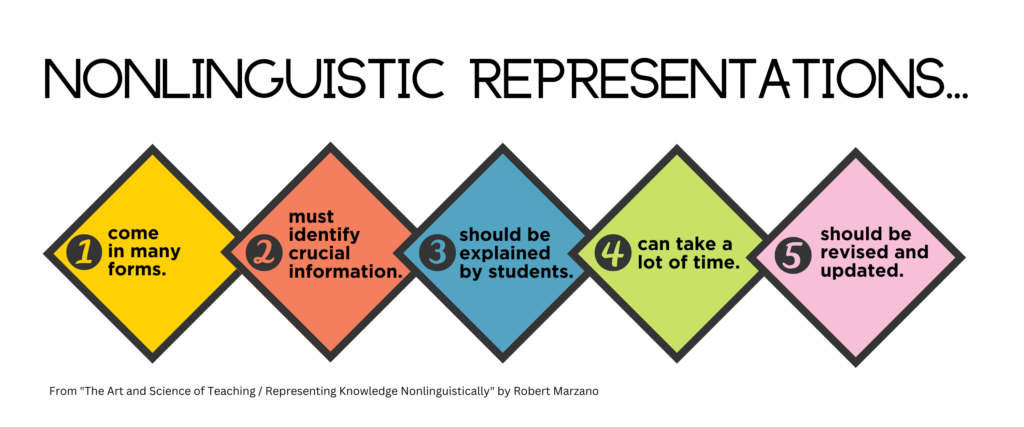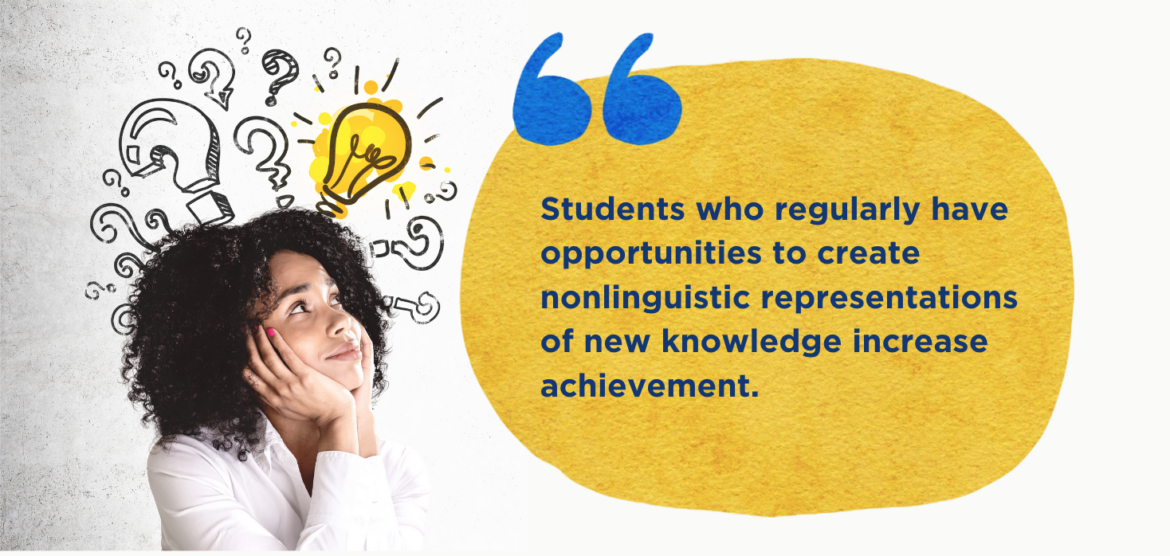Nonlinguistic representation is one of Robert Marzano’s high-yield instructional strategies. In his book, “Classroom Instruction That Works,” Marzano finds that students who regularly have opportunities to create nonlinguistic representations of new knowledge increase achievement.
What Is Nonlinguistic Representation?
As I mentioned in another blog article, nonlinguistic representation is defined as expressing an idea in a way that goes beyond the use of words. Ideas are expressed through diagrams, pictures, graphic organizers, 3D models, movement, demonstrations, role-play, simulations, or mental images. This could include dancing, drawing, or even acting. The good thing about nonlinguistic representation is that it can engage students at any grade level.

Five Key Tips
In “The Art and Science of Teaching / Representing Knowledge Nonlinguistically,” Marzano provides five key points to keep in mind when using nonlinguistic representations in the classroom.
- Nonlinguistic representations come in many forms. These can include graphic organizers, sketches, pictographs (stick figures and symbols), concept maps, dramatizations, flowcharts, or computerized simulations. The key thing to remember is to provide student’s choices in representation and give them the opportunity to express their knowledge in ways that interest them.
- Nonlinguistic representations must identify crucial information. Nonlinguistic representations that fail to focus on crucial information can have little or no positive effect on student learning. Students’ knowledge must be the focus of the representation.
- Students should explain their nonlinguistic representations. Asking students to explain their representations promotes even greater understanding. Students could clarify any symbols or images they included; through this explanation, they are revisiting the content and applying it to their own learning.
- Nonlinguistic representations can take a lot of time. This is one of the biggest drawbacks of the strategy. It will take students time to create a graphic or dance. Because they take so much time, teachers should focus the nonlinguistic representations on the most crucial elements of content.
- Students should revise their representations when necessary. Nonlinguistic representations are a form of note-taking in that they represent a student’s understanding of the content at a specific point in time. As the lesson continues, students will continue to learn. Allow them to update their representations, so their new knowledge is reflected.

Nonlinguistic representation is a powerful teaching strategy; therefore, I encourage you to try incorporating it into your next lesson. How have you used nonlinguistic representation previously, or how will you use it moving forward? Share with us in the comments!


1 comment
We require our 5th graders to show work or justify their answers on every graded assignment. I teach math and science. I allow my students to use drawings to justify their science answers if they are able to communicate their thoughts more clearly that way.